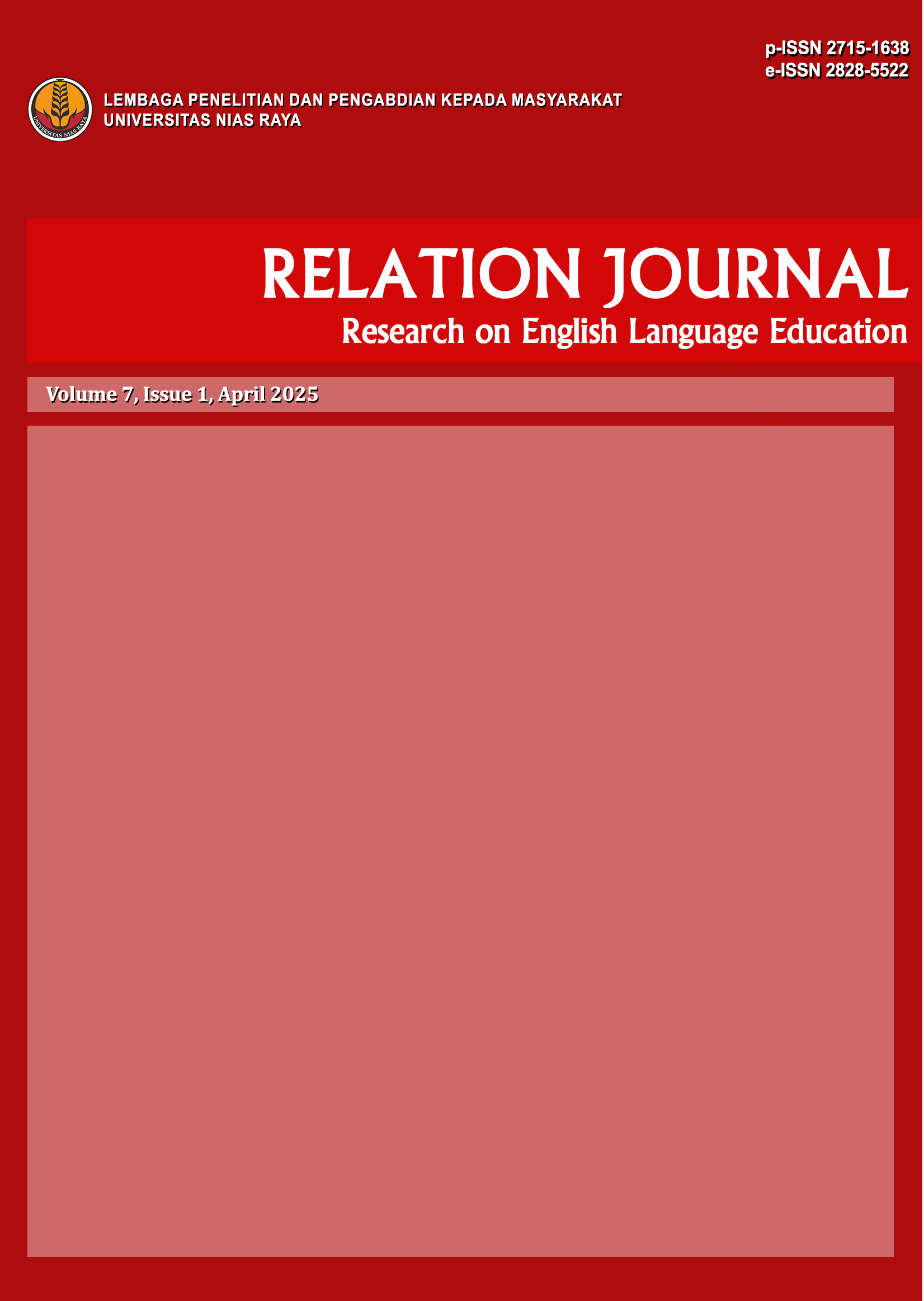TRANSLATION TECHNIQUES OF GARMENT STEAMER PARTS TERMS IN USER MANUAL
Abstract
This study aims to describe the translation of garment steamer parts terms from English to Indonesian in the user manual. The method used is descriptive qualitative, with data consisting of technical terms related to the parts of the device, both in single words and phrases. The data source is the Philips EasyTouch Plus Garment Steamer user manual, models GC514, GC518, and GC524. The data collection technique employed is the listening and note-taking technique, where the researcher carefully reads the entire text of the manual to identify and record relevant terms. The data analysis follows the interactive model, which includes data reduction, data presentation, and drawing conclusions. The results of the study show the application of five translation techniques: two single techniques (Compensation and Established Equivalent), and three combined techniques (Compensation + Transposition, Compensation + Borrowing, and Compensation + Established Equivalent). The Compensation technique is the most dominant, appearing 6 times, followed by Established Equivalent with 5 occurrences. These findings indicate that Compensation is frequently used to address linguistic differences between the source and target texts. This study implies that understanding the appropriate translation techniques is crucial for producing translations that are accurate and easily understood.
References
Goeltz, D. R. (2014). Globalization and hypercompetition-Drivers, linkages, and industry differences. Journal of International Business and Cultural Studies, 8, 1–15.
Hasfikin, H., & Nisa, A. K. (2024). Penerjemahan Indonesia-Arab pada Petunjuk Keselamatan Penerbangan Komersial. Kalamuna: Jurnal Pendidikan Bahasa Arab Dan Kebahasaaraban, 5(2), 265–276. https://doi.org/10.52593/klm.05.2.10
Kormakova, I., Kruhlyanko, A., Peniuk, V., Ursakii, Y., & Verstiak, O. (2023). Actual strategies for businesses penetrating foreign markets in the modern economy: Globalisation aspect. International Journal of Professional Business Review: Int. J. Prof. Bus. Rev., 8(5), 117.
Molina, L., & Albir, A. H. (2002). Translation Techniques Revisited: A Dynamic and Functionalist Approach. Meta, 47(4), 498–512. https://doi.org/10.7202/008033ar
Mukminin, M. S. (2025). How does Emma Heesters Translate the Song ‘Maafkan Aku’into English? JULIET: Journal of English Language and Literature, 2(1), 1–11.
Mustafa, F., Aziz, Z. A., & Khabri, I. (2021). Translation Techniques Used in Translating a Smartphone User Manual. Englisia: Journal of Language, Education, and Humanities, 9(1), 33–49. https://doi.org/10.22373/ej.v9i1.10494
Narula, R. (2014). Globalization and Technology: Interdependence, Innovation Systems and Industrial Policy. John Wiley & Sons.
Ninduwezuor-Ehiobu, N., Tula, O. A., Daraojimba, C., Ofonagoro, K. A., Ogunjobi, O. A., Gidiagba, J. O., Egbokhaebho, B. A., & Banso, A. A. (2023). Exploring innovative material integration in modern manufacturing for advancing us competitiveness in sustainable global economy. Engineering Science & Technology Journal, 4(3), 140–168.
Nugroho, M. A. B., Agustiana, V., & Budi, F. F. K. (2024). Translation Techniques of Racial Slurs in The Movie’42’subtitles. Leksema: Jurnal Bahasa Dan Sastra, 9(1), 57–67.
Phanata, S., Sandyaningrum, J. N., & Vitalia, M. (2022). The Literal Translation of Sclerometer User Manual from Chinese to Indonesia. MANDARINABLE: Journal of Chinese Studies, 1(2), 42–52. https://doi.org/10.20961/mandarinable.v1i2.443
Rahma, L. G. A. D., & Hardjanto, T. D. (2022). Teknik Penerjemahan Ungkapan Fatis Bahasa Inggris ke dalam Bahasa Indonesia. Linguistik Indonesia, 40(2), 293–303.
Ruwndar, J., Kaur, K., & Gupta, R. (2024). Utilization of time saving cleaning and clothing care devices by working and non-working women. Journal of Krishi Vigyan, 12(1), 183–187.
Salwa, M. R., & Geubrina, M. (2021). Translation Method Found in Sm-B310 E Samsung User Manual. INTERNATIONAL JOURNAL OF EDUCATION, SOCIAL SCIENCES AND LINGUISTICS, 1(1), 23–30.
Sianturi, S. F., & Adha, T. K. R. (2022). Analisis Teknik Penerjemahan Subtitle Serial Drama Go Ahead Episode 1. Jurnal Bahasa, Sastra, Dan Budaya, 12(3), 1–18.
Wang, J., Wang, X., Ma, C., & Kou, L. (2021). A survey on the development status and application prospects of knowledge graph in smart grids. IET Generation, Transmission & Distribution, 15(3), 383–407.
Xu, Q., & Deng, L. (2021). Investigating the use of translation continuation tasks in commercial translation teaching: A study on translating user manuals. Chinese Journal of Applied Linguistics, 44(3), 366–381.
Copyright (c) 2025 Muhamad Saiful Mukminin

This work is licensed under a Creative Commons Attribution-ShareAlike 4.0 International License.
You are free to:
- Share — copy and redistribute the material in any medium or format for any purpose, even commercially.
- Adapt — remix, transform, and build upon the material for any purpose, even commercially.
- The licensor cannot revoke these freedoms as long as you follow the license terms.
Under the following terms:
- Attribution - You must give appropriate credit , provide a link to the license, and indicate if changes were made . You may do so in any reasonable manner, but not in any way that suggests the licensor endorses you or your use.
- No additional restrictions - You may not apply legal terms or technological measures that legally restrict others from doing anything the license permits.
Notices:
- You do not have to comply with the license for elements of the material in the public domain or where your use is permitted by an applicable exception or limitation.
- No warranties are given. The license may not give you all of the permissions necessary for your intended use. For example, other rights such as publicity, privacy, or moral rights may limit how you use the material.









